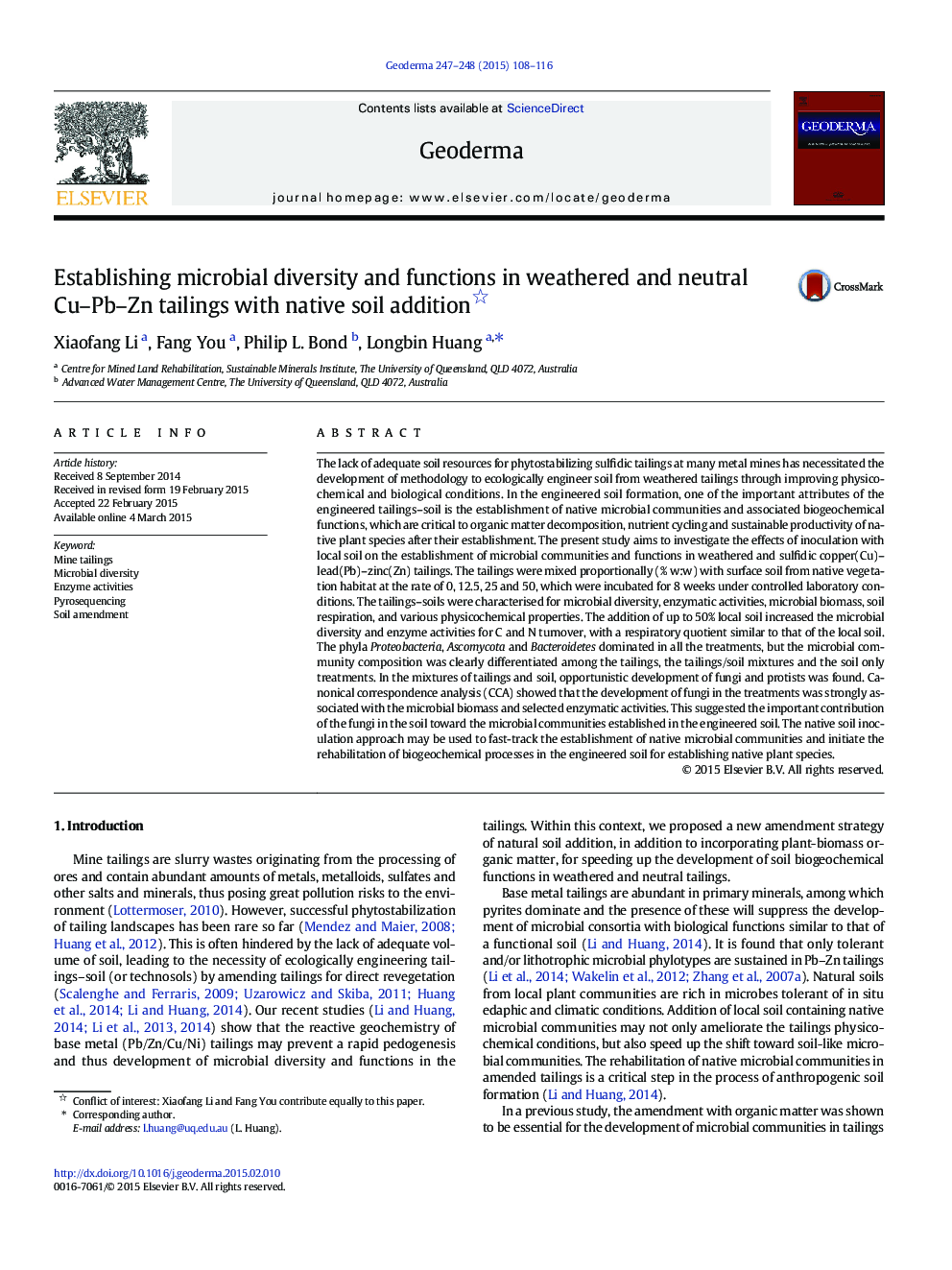| Article ID | Journal | Published Year | Pages | File Type |
|---|---|---|---|---|
| 6408571 | Geoderma | 2015 | 9 Pages |
â¢Native soil established soil microbial diversity in weathered and neutral Cu-Pb/Zn tailings.â¢Soil enzymatic functions were improved by adding native soil in the tailings.â¢Bacteria dominated the microbial assemblages in the tailings and soil treatments.â¢Opportunistic development of fungi was present in the tailings amended with native soil.â¢Total Zn and S dominantly limited microbial community development in the tailings.
The lack of adequate soil resources for phytostabilizing sulfidic tailings at many metal mines has necessitated the development of methodology to ecologically engineer soil from weathered tailings through improving physicochemical and biological conditions. In the engineered soil formation, one of the important attributes of the engineered tailings-soil is the establishment of native microbial communities and associated biogeochemical functions, which are critical to organic matter decomposition, nutrient cycling and sustainable productivity of native plant species after their establishment. The present study aims to investigate the effects of inoculation with local soil on the establishment of microbial communities and functions in weathered and sulfidic copper(Cu)-lead(Pb)-zinc(Zn) tailings. The tailings were mixed proportionally (% w:w) with surface soil from native vegetation habitat at the rate of 0, 12.5, 25 and 50, which were incubated for 8Â weeks under controlled laboratory conditions. The tailings-soils were characterised for microbial diversity, enzymatic activities, microbial biomass, soil respiration, and various physicochemical properties. The addition of up to 50% local soil increased the microbial diversity and enzyme activities for C and N turnover, with a respiratory quotient similar to that of the local soil. The phyla Proteobacteria, Ascomycota and Bacteroidetes dominated in all the treatments, but the microbial community composition was clearly differentiated among the tailings, the tailings/soil mixtures and the soil only treatments. In the mixtures of tailings and soil, opportunistic development of fungi and protists was found. Canonical correspondence analysis (CCA) showed that the development of fungi in the treatments was strongly associated with the microbial biomass and selected enzymatic activities. This suggested the important contribution of the fungi in the soil toward the microbial communities established in the engineered soil. The native soil inoculation approach may be used to fast-track the establishment of native microbial communities and initiate the rehabilitation of biogeochemical processes in the engineered soil for establishing native plant species.
